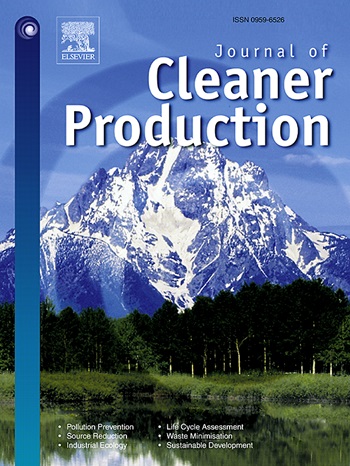Process development and techno-economic feasibility of thiosulfate-based hydrometallurgical recycling for waste printed circuit boards
IF 9.7
1区 环境科学与生态学
Q1 ENGINEERING, ENVIRONMENTAL
引用次数: 0
Abstract
In this study, we developed a comprehensive process for metal recovery from waste printed circuit boards (WPCBs) using an environmentally friendly thiosulfate leaching method, followed by a detailed techno-economic analysis. The metal recovery process consisted of two leaching stages: the first stage used sulfuric acid in the presence of hydrogen peroxide for copper (Cu) recovery and the second stage used thiosulfate for gold (Au) leaching. After leaching, Cu was recovered via crystallization, and Au was recovered via reduction using sodium dithionite. To optimize Au recovery, the residual Cu ions in the WPCBs following the first leaching stage were carefully managed to stabilize the Au-thiosulfate complex and minimize water usage. The preliminary techno-economic analysis estimated the net present value (NPV) of the proposed recycling process at a small scale (1200 tons per year) to be 5.94 million USD, with an 18.04 % rate of return on investment over a 20-year project lifespan; the estimated payback period was approximately 3.9 years. Sensitivity analysis revealed that the NPV is highly sensitive to the WPCB market price and Au recovery efficiency. Overall, the results demonstrate that employing an environmentally friendly thiosulfate leaching process is profitable under optimized conditions, offering valuable insights into green technologies for e-waste processing.

废印刷电路板硫代硫酸盐基湿法冶金回收工艺开发及技术经济可行性
在本研究中,我们开发了一种利用环保硫代硫酸盐浸出法从废弃印刷电路板(wpcb)中回收金属的综合工艺,随后进行了详细的技术经济分析。金属回收过程包括两个浸出阶段:第一阶段使用硫酸在过氧化氢存在下回收铜(Cu),第二阶段使用硫代硫酸盐浸出金(Au)。浸出后,铜通过结晶回收,金通过二亚硫酸钠还原回收。为了优化金的回收率,在第一浸出阶段后,对wpcb中的残余Cu离子进行了精心管理,以稳定硫代硫酸金络合物,并最大限度地减少用水量。初步的技术经济分析估计,拟议的小规模回收过程(每年1200吨)的净现值(NPV)为594万美元,在20年的项目生命周期内投资回报率为18.04%;预计投资回收期约为3.9年。敏感性分析表明,NPV对WPCB市场价格和金回收率高度敏感。总体而言,结果表明,在优化条件下,采用环保的硫代硫酸盐浸出工艺是有利可图的,为电子废物处理的绿色技术提供了有价值的见解。
本文章由计算机程序翻译,如有差异,请以英文原文为准。
求助全文
约1分钟内获得全文
求助全文
来源期刊

Journal of Cleaner Production
环境科学-工程:环境
CiteScore
20.40
自引率
9.00%
发文量
4720
审稿时长
111 days
期刊介绍:
The Journal of Cleaner Production is an international, transdisciplinary journal that addresses and discusses theoretical and practical Cleaner Production, Environmental, and Sustainability issues. It aims to help societies become more sustainable by focusing on the concept of 'Cleaner Production', which aims at preventing waste production and increasing efficiencies in energy, water, resources, and human capital use. The journal serves as a platform for corporations, governments, education institutions, regions, and societies to engage in discussions and research related to Cleaner Production, environmental, and sustainability practices.
 求助内容:
求助内容: 应助结果提醒方式:
应助结果提醒方式:


